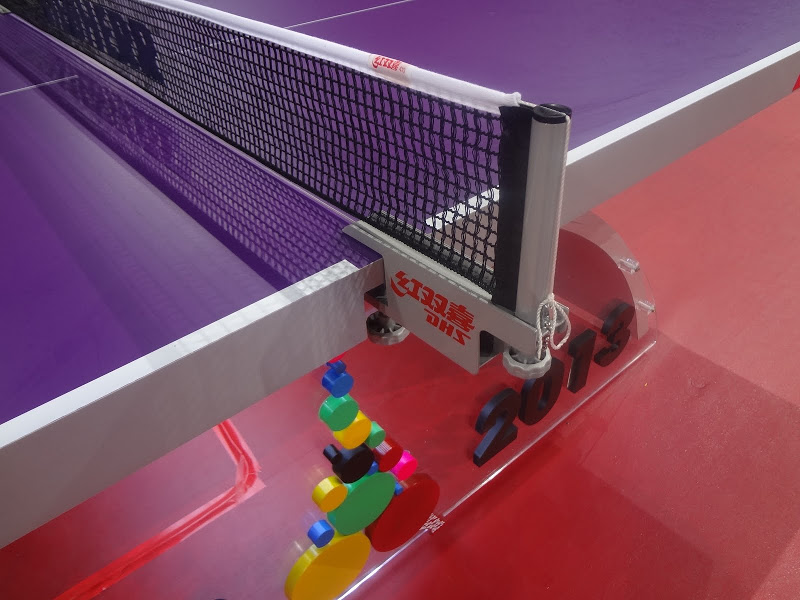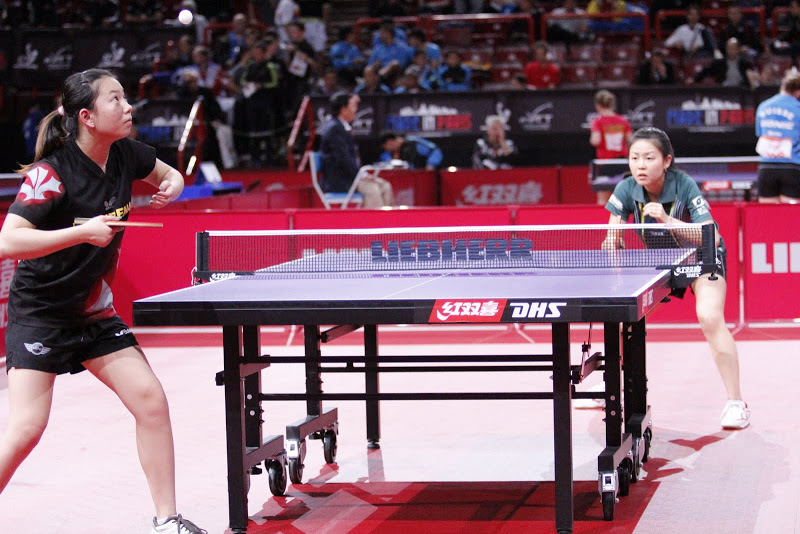Table tennis

History
Adaptation and creativity were critical for the development of table tennis. As its more famous brother relies on good weather conditions to be played, a rainy day ended up leading to table tennis’ first steps as a game. Around 1880, players from an English club improvised a new game because of the bad weather. On a snooker table, using books as rackets, a string as a net and a normal tennis ball, the first table tennis strokes were taken.
Seen as purely entertainment at first, the sport started to develop with rules similar to those used in normal tennis. The big step taken by the sport came in 1890, when the celluloid ball was introduced, perfect for playing table tennis. From then on, table tennis began to take longer strides towards modernisation.
In 1900, the sport arrived in China, introduced by westerners. This was a very important milestone, as currently China is the big table tennis powerhouse. Despite this, the International Table Tennis Federation (ITTF) was actually founded in Europe in 1926. The federation outlined clearer rules and that same year held the first world championship. In the following decades, the Europeans imposed their supremacy in the sport, but that would change.
With technological evolution, the rackets ended up being covered in foam, which deeply changed the technique used in the sport. This development brought with it the overpowering growth of the Asians. Their superior results are such that the last time a non-Asian national won the singles female world championship was in 1955, a feat managed by Angelica Rozeanu-Aldestein from Romania.
Acknowledgement from the International Olympic Committee would only come in 1977. Four years later, table tennis was included in the Olympic programme. It made its Olympic debut at the 1988 Games in Seoul. From the 12 medals awarded in that edition of the Games, nine went to Asian athletes. China won the gold, the silver and the bronze in the women's event. In the men’s competition, playing at home, South Korea scooped up the gold and silver, while Erik Lindh from Sweden ended up with the bronze. In the men’s doubles, China won the gold, Yugoslavia the silver and Korea the bronze. In the women’s competition, the Koreans won the gold. With China taking home the silver, followed by Yugoslavia with the bronze.
 From the 2008 Games in Beijing onwards, the doubles competitions were replaced by the team events. The Chinese won the gold in the men’s and women’s singles and team events. The result was repeated in London, when the Chinese once again won all four events. In addition to the four gold medals, China also scooped up two silver at the London Games, reinforcing their position as a table tennis powerhouse.
From the 2008 Games in Beijing onwards, the doubles competitions were replaced by the team events. The Chinese won the gold in the men’s and women’s singles and team events. The result was repeated in London, when the Chinese once again won all four events. In addition to the four gold medals, China also scooped up two silver at the London Games, reinforcing their position as a table tennis powerhouse.
Curiosities
The Chinese giant
Since it was included in the Olympic programme, table tennis has given out 28 gold medals. China has won no less than 24 of them, which corresponds to 85% of the gold medals up for grabs. In addition to the Chinese, only two other countries have ever won the Olympic title: South Korea (three times) and Sweden.
The last time that a Chinese athlete did not win the gold in an Olympic competition was in Athens (2004). South Korean Seungmin Ryu managed to beat Hao Wang from China in the men's singles final that year. In addition to Wang winning the silver, Liqin Wang also won the bronze for China that year.
Another impressive feat achieved by the Chinese is winning the gold medals up for grabs in two straight editions of the Games. In Atlanta (1996) and Sydney (2000) they won every gold medal possible. The same happened in Beijing (2008) and London (2012). If this feat is repeated in Rio de Janeiro (2016), it will be the first time that China wins all the table tennis events at the Olympics for three editions of the Games in a row.
The little champion
Deng Yaping – who was rather short – had to overcome prejudice before becoming a true legend in the sport. Being only 1.50m tall, Deng was only called up by the Chinese national table tennis squad in 1988, when she was 15. This could have happened earlier, as at the age of 13, Deng had already been crowned Chinese champion. However, because of her height she was not called up.
Nonetheless, her talent shone through. From 1989 to 1997, Deng won an impressive nine singles and doubles world titles. At the Olympics, she was equally impressive. In Barcelona (1992) and Atlanta (1996), she won the gold medal in the singles and doubles events. In 1999, she was recognised as China’s sport personality of the decade, which provided the icing on the cake for her brilliant career.
See also
Confederação Brasileira de Tênis de Mesa (CBTM)
Site: www.cbtm.org.br
E-mail: cbtm@cbtm.org.br
Federação Internacional de Tênis de Mesa (ITTF): www.ittf.com


